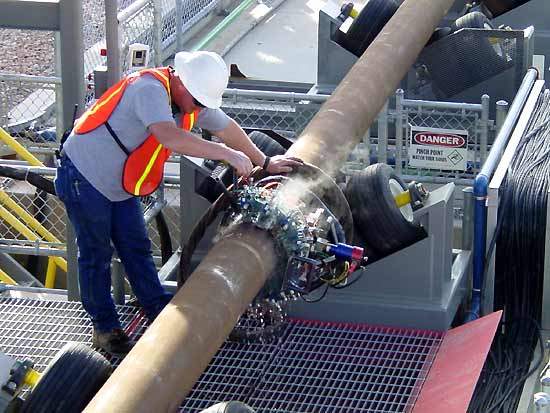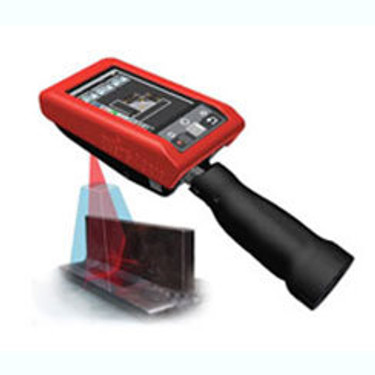Advanced Pipeline Welding Inspection: Methods for Finding Imperfections
Advanced Pipeline Welding Inspection: Methods for Finding Imperfections
Blog Article
Comprehending the Basics of Pipeline Welding Inspection: Essential Variables for Examining Weld High Quality and Preventing Failures
In the realm of pipe welding assessment, the stakes are without a doubt high, requiring an extensive understanding of fundamental concepts to make sure weld quality and mitigate failing dangers. Various essential aspects come into play, consisting of the choice of suitable materials, the application of advanced assessment methods, and the acknowledgment of widespread welding defects. In addition, adherence to regulative criteria plays an essential duty in preserving system honesty. Yet, the complexities inherent in these processes elevate essential inquiries about ideal practices and emerging modern technologies that might redefine inspection procedures-- inquiries that require more exploration.
Importance of Weld Quality
The integrity of a pipeline is essentially dependent on the top quality of its welds, making weld quality a crucial factor in making sure risk-free and reliable procedure. A pipe weld offers as a joint factor where materials are signed up with, and any kind of deficiencies in this area can result in considerable structural weaknesses. Poor weld top quality can result in leaks, ruptures, and disastrous failures, positioning severe security dangers and environmental dangers.
A number of aspects add to the quality of a weld, including the choice of welding procedure, the skills of the welder, and the conditions under which the welding is performed - Pipeline Welding Inspection. Inadequate prep work, improper warmth input, and contamination can jeopardize weld stability, resulting in issues such as porosity, insufficient blend, or fractures. As a result, rigid quality assurance procedures need to be executed throughout the welding process to minimize these risks
Additionally, the lasting performance of a pipeline is heavily influenced by the durability of its welds. High-quality welds not just improve the overall toughness of the pipeline yet likewise extend its life span, minimizing the need for pricey repair services and downtime. Thus, guaranteeing superior weld high quality is paramount in pipe style and maintenance practices.
Trick Examination Methods
Making sure weld high quality requires the implementation of reliable evaluation strategies to identify prospective flaws prior to they lead to failures. Pipeline Welding Inspection. Amongst the most extensively used approaches are visual evaluation, radiographic screening (RT), ultrasonic testing (UT), and magnetic bit screening (MT) Each method is and serves a distinctive objective chosen based on the details requirements of the pipeline job
Aesthetic assessment is the initial line of defense, allowing examiners to analyze surface conditions, positioning, and general handiwork. It is a quick and cost-efficient technique that can expose evident flaws. Radiographic screening provides a comprehensive sight of inner weld stability by making use of X-rays or gamma rays to discover subsurface imperfections. This technique is particularly effective for determining fractures, spaces, and additions.
Ultrasonic testing employs high-frequency audio waves to review the density and stability of welds, making it suitable for identifying interior stoppages. Magnetic fragment screening is a trustworthy technique for identifying surface area and near-surface issues on ferromagnetic materials by applying electromagnetic fields and great ferrous particles. By making use of these vital examination methods, pipeline welding assessors can make sure the best quality requirements are maintained, inevitably causing much safer and extra trusted pipeline systems.
Typical Welding Problems
In the world of pipeline welding, recognizing typical welding defects is vital for preserving architectural stability and safety and security. These problems can lead to disastrous failings if not recognized and dealt with without delay. Among one of the most prevalent problems are porosity, which takes place when gas entraps in the weld metal, developing voids that deteriorate the joint. An additional significant concern is lack of combination, where the weld steel does not properly bond with the base product, endangering the joint's strength.

Splits are also a critical concern, manifesting in different kinds such as warm splits, cool splits, and root cracks. Each type postures unique challenges and requires particular assessment methods for discovery. Undercut is an additional flaw that can minimize the weld's cross-sectional location, bring about stress and anxiety focus factors, while slag incorporation takes place when non-metallic product ends up being caught in the weld pool, adversely affecting the mechanical buildings of the weld.
In addition, wrong grain shape can lead to uneven stress circulation. Acknowledging these typical problems is important for examiners and welders alike, as very early detection and adjustment are vital to ensuring the long life and dependability of pipeline systems.

Products and Their Influence
Selecting the suitable products for pipe welding significantly influences the general efficiency and integrity of the bonded joints. The choice of base metals, filler materials, and go now finishes plays a crucial role in determining the stamina, rust resistance, and durability of the welds. For instance, carbon steel is typically utilized for its balance of toughness and expense, but it may be vulnerable to rust in specific atmospheres, requiring making use of safety layers or corrosion-resistant alloys.
Moreover, dissimilar steel welding calls for mindful factor to consider of thermal development properties and potential galvanic corrosion. The compatibility of products can greatly impact the microstructure of the weld, causing variations in mechanical homes. As an example, stainless steel offers excellent deterioration resistance however may require specific filler products to ensure a sound weld joint.
On top of that, the influence of temperature and environmental problems on material selection can not be underestimated. High-strength steels might shed ductility at elevated temperature levels, while low-temperature applications may call for products with enhanced toughness. Inevitably, comprehending the implications of product options is vital for achieving optimum weld top quality and avoiding failures in pipe systems.

Governing Standards and Compliance
Governing criteria and conformity play a crucial role in pipeline welding, establishing the structure within which reliable and secure methods are preserved. These standards are developed by various companies, consisting of the American Society of Mechanical Engineers (ASME), the American Welding Culture (AWS), and the Pipe and Hazardous Materials Safety Management (PHMSA) Sticking to these guidelines makes sure that welding procedures meet the called for top quality and security benchmarks.
Conformity with governing requirements is vital not just for guaranteeing the integrity of the welds yet likewise for protecting the setting and public security. Inspectors are entrusted with confirming that welding operations follow these requirements through strenuous evaluations of both the processes and the final welds. This entails evaluating welder qualifications, welding treatments, and the materials utilized.
Failing to conform with recognized laws can cause significant repercussions, including expensive repairs, legal responsibilities, and devastating failings. Therefore, companies should incorporate compliance right into their functional methods, cultivating a culture of safety and security and quality. Routine training and audits are critical parts in maintaining adherence to these governing criteria, making sure that all workers are knowledgeable and equipped to promote the highest levels of pipe welding top quality.
Final Thought
To conclude, a thorough understanding of pipeline welding assessment is essential visit homepage for ensuring weld high quality and stopping failings. By using key evaluation methods and acknowledging typical welding defects, examiners can successfully Going Here examine the honesty of welds. Factor to consider of product option and adherence to governing standards further enhance the reliability and safety of pipeline systems. Ultimately, these practices contribute to the prevention of leaks and devastating failures, underscoring the vital significance of extensive evaluation processes in pipeline construction and upkeep.
In the world of pipe welding evaluation, the stakes are undoubtedly high, necessitating a comprehensive understanding of basic concepts to guarantee weld quality and minimize failing risks (Pipeline Welding Inspection).The honesty of a pipe is fundamentally dependent on the high quality of its welds, making weld quality a critical variable in making sure secure and reliable procedure.Several variables contribute to the top quality of a weld, including the selection of welding process, the abilities of the welder, and the conditions under which the welding is executed. Undercut is an additional flaw that can reduce the weld's cross-sectional location, leading to stress concentration factors, while slag inclusion takes place when non-metallic material ends up being entraped in the weld pool, detrimentally affecting the mechanical residential or commercial properties of the weld
In verdict, a comprehensive understanding of pipe welding examination is important for making certain weld quality and stopping failings.
Report this page